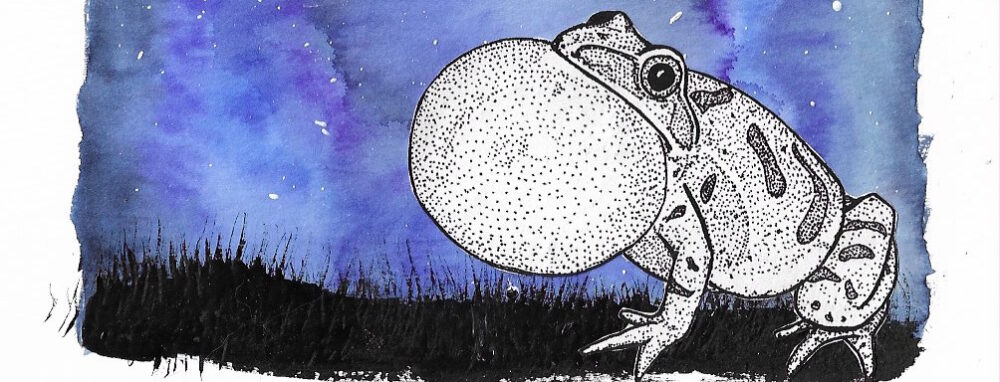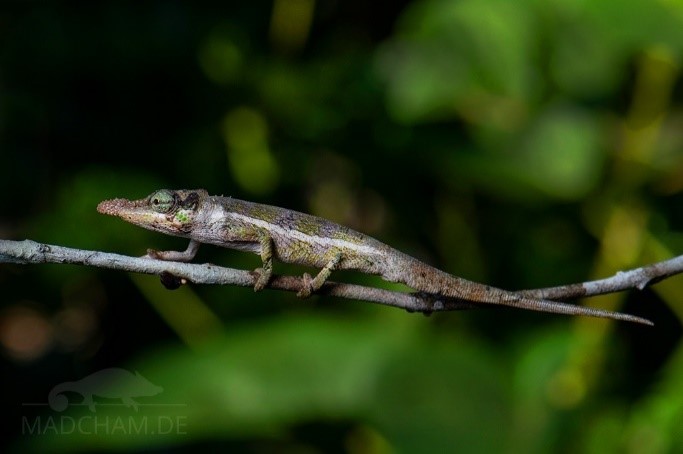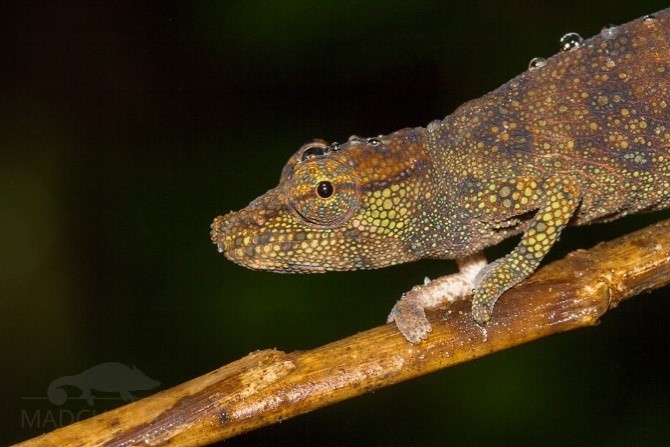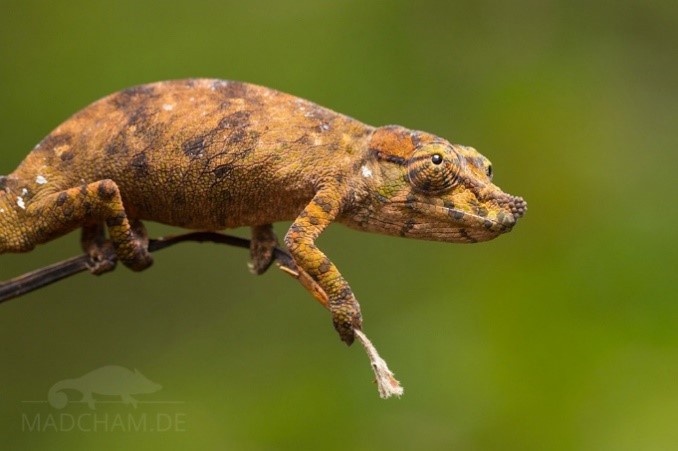By Michael McGuire
Taxonomy, the study of naming and classifying organisms, how hard could that be right? Turns out, pretty complex when you have a bunch of similar looking chameleons! For the longest time, a group of chameleon species in Madagascar have been put into the same species name “bucket”, if you will, and been collectively called Calumma nasutum. It has been long known that these chameleons were likely not all the same species, but taxonomy is a difficult and time-consuming task especially when chameleons in the genus Calumma look so similar! This is known as a species complex, and recently scientists have untangled these tiny and adorable lizards and given them official names. In this process, involving CT-scans, genetic analysis, and incredibly nitpicky measurements, they discovered three new undescribed species! They also designated official scientific names to three known species, for a total of six! To put it simpler, a species complex is like if you gave out the name “potato” to the potato, but also to an apple. Both are called potatoes, but one clearly is not a potato. This is a big deal for conservation since what was previously assumed to be one species with stable populations has turned into many, with more uncertain prevalence.
Chameleons in the C. nasutum “complex” are tiny, often no larger than your finger. Surprisingly however, they are not as tiny as Madagascar’s smallest chameleons, Brookesia micra which only grow an inch long! First on the list of newly minted chameleons is Calumma emelinae which has a bony nose protrusion much like most Calumma species, and males can have a gorgeous green coloration with spines along their back.
Next is Calumma ratnasariae which is mainly a drab grey or brown, but when mating season rolls around and males don their display colors is when the magic happens. As you can see below, they are a pretty pastel rainbow of colors, the likes of which you may see on a trendy interior decorators Instagram page.

And finally, the last new species is Calumma tjiasmantoi which turns a rusty shade of orange when at their most vibrant.
Scientists have had a difficult time describing the original species, Calumma nasutum. It wasfirst described almost 200 years ago by some of the first French zoologists to visit Madagascar, Duméril & Bibron in 1836. That chameleon described all those years ago and the cause of this complicated mix-up is on the left.
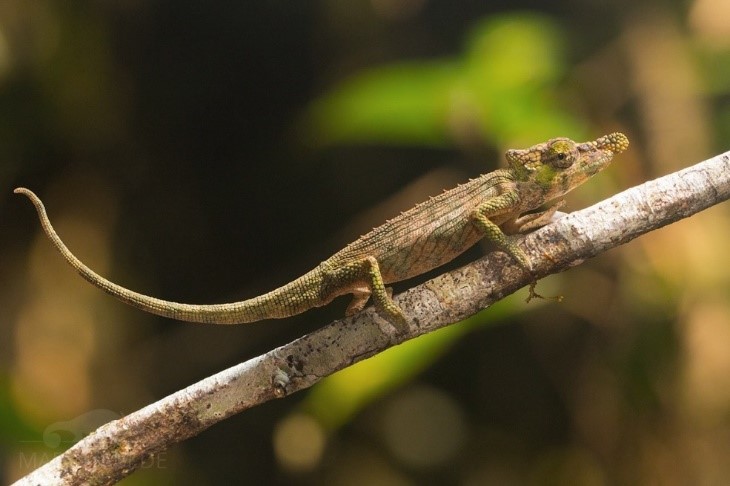
By contrast, Calumma radamanusis this very similar-looking species.
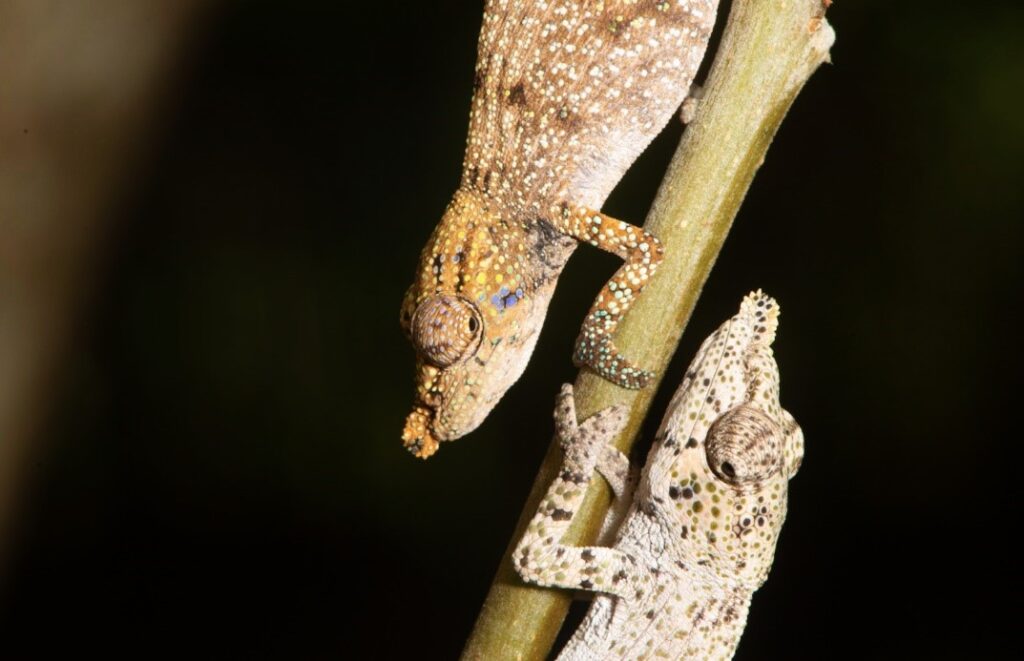
And the last described species, Calumma fallax is very easily confused with most all the rest of these chameleons, but most of all C. nasutum! The main identifier between them is their location, as C. nasutum are found in eastern and northern Madagascar, whereas C. fallax occurs at high elevation along the east coast.

Herpetologist and taxonomist Dr. Mark Scherz noted that a few of these species are already threatened. This illuminated an interesting quandary between taxonomy and conservation. All these species, being called C. nasutum previously, were listed as Least Concern according to the IUCN. But now what we thought as one species is in fact many, which divides the group and shows that some of these lizards are in fact endangered. Many of these chameleons exist in highly fragmented populations, and conservation policy takes a long time to update.
Scherz shared with me his frustrations with the Madagascan government for the difficulty to get permits to take these lizards for scientific research. Conversely, many permits are given to those taking chameleons to fuel the exotic pet trade. Scientists taking one or two individuals is a drop in the pool compared to the exporters. This disproportionate treatment between scientists and citizens is a problem, and one that makes it difficult to do necessary research for conservation. The Madagascan government feels as though researchers are taking advantage, since they do not see any return for allowing an animal to be taken. On the contrast, exporters are giving back to the government in taxes. This viewpoint is understandable, but Scherz noted that change needs to come from within. Madagascan citizens and researchers are the only ones who can push back against this. But in one of the poorest countries in the world with a university with only minimal resources, that is easier said than done.
Madagascar’s habitats are being lost at an unprecedented rate, largely due to agriculture. Farming techniques are outdated with many citizens doing slash and burn agriculture to produce rice. This strips the soil of its nutrients within years and the process must be repeated. This populice driven deforestation is the biggest threat to Madagascar’s flora and fauna.
There is some hope however, Dr. Scherz mentioned he has worked with many up and coming Madagascan citizen researchers who are discovering new species and trying to protect the countries natural wonders. Perhaps with enough protection and hard work conservation policies will be put into place before these newly discovered small chameleons are lost.
Prötzel, D., Scherz, M.D., Ratsoavina, F.M., Vences, M. & Glaw, F. (2020) Untangling the trees: Revision of the Calumma nasutum complex (Squamata: Chamaeleonidae). Vertebrate Zoology, 70(1):23–59. DOI: 10.26049/VZ70-1-2020-3 [pdf]
Photos by Dr. Mark Scherz & MadCham.De
